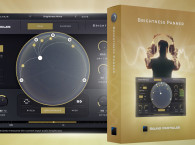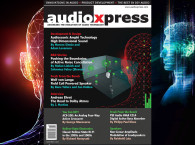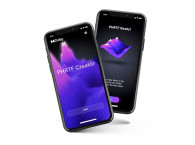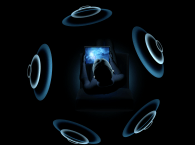What about music? On that front, spatial audio is beginning to attract listeners. Music recorded in 360 degrees for a new, immersive sound experience has started to take off. Since Apple introduced spatial audio to its Apple Music service, the company says more than half of its subscribers are enjoying the 3D-style sound, and that plays of spatial audio tracks quadrupled in just a few months.

Now, these two great sound experiences are about to sound great together. With the listening public drawn to both spoken word podcasts and immersive music, audio professionals say the next big thing is spatial audio podcasts — storytelling engineered to place the listener right in the middle of things.
"It's if it's not already ready for primetime, it's very close," says Matt Yocum, an award-winning Hollywood sound designer who has been at the forefront of spatial audio podcasting. "Once people grow accustomed to hearing things spatially, a regular stereo recording will feel like a step backwards."
Before that can happen, pro audio needs to address two key challenges of spatial podcast creation: distribution and capture.
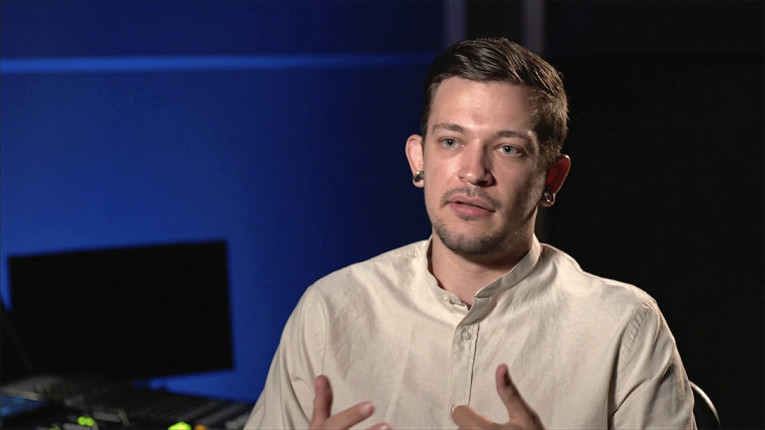
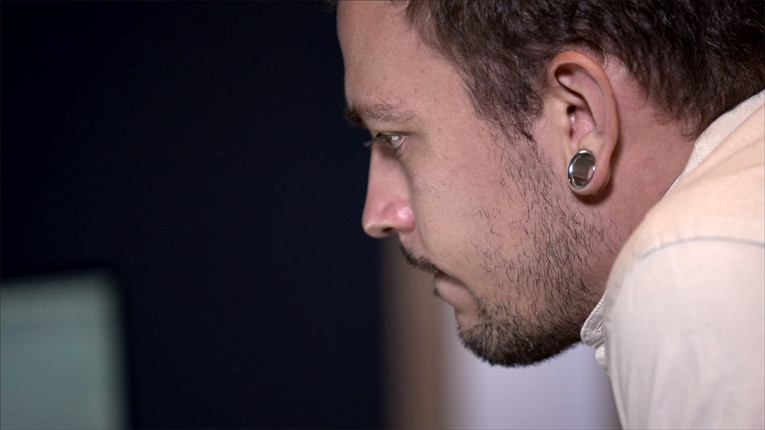
An Evolution in Immersiveness
Consumers have already gotten a taste of immersive podcasts. Services like iHeartRadio introduced what they call 3D podcasts, and a slew of content creators have developed immersive audio titles. Yocum, for example, has done extensive work for QCODE, a new media company that creates many narrative podcast series featuring professional actors and intricate sound designs. “They want it to sound like a movie, just in podcast form,” he says.
But because most podcasts are distributed online and enjoyed through stereo headphones, these high-quality productions are usually re-rendered in a binaural format — basically taking a 360-degree recording and adapting it to stereo listening. The process preserves many of the spatial cues — sound seemingly comes from different directions, for example — but can’t represent the total spatial experience as intended by the content creator.
Yocum works with Dolby Atmos, which expands on Dolby’s popular surround sound technology by adding height channels, effectively creating 3D sound objects. Apple Music’s spatial audio feature supports Dolby Atmos so music listeners can hear songs spatially the way the artists produced them. Select Apple AirPods also support Atmos playback.
Generally, however, podcast distribution platforms can’t yet deliver native Atmos files, or other spatial audio formats. But the time is coming. “It will be nice to be able to deliver something like an Atmos file that will scale for any consumer playback system," Yocum says. "We're waiting for that scalability so we don't always have to deliver a stereo binaural re-render."

Beyond Storytelling
Yocum and others agree, the potential for spatial audio podcasts extends well beyond narrative storytelling. Any podcast that would benefit from communicating a sense of place is a candidate for spatial audio: news podcasts recorded on-location, adventure podcasts from faraway places, even the popular interview-style podcast could be enhanced spatially if the site of the interview— on a stage, at a conference, in the field — adds to the listening experience.
"Audio does such a great job of taking a person to a place,” explains Rob Byers, who has worked with broadcasters and podcast producers including NPR and American Public Media and is currently Technical Director for Criminal Productions at Vox Media. “Spatial is great for any kind of storytelling or journalism. Not just fiction."
In addition to solving the distribution challenge, Byers expects podcast producers to innovate around sound capture. Currently, it’s possible to capture multiple channels of audio and build a spatial recording in post-production, but for many podcast formats, that could be a heavy lift. Not every podcaster today has an audio engineer at the ready.
"Most producers of narrative audio right now are doing it with a microphone in one hand and a recorder in the other," Byers says. "They're gathering pieces of audio, building it in post, and creating a scene. Capturing true spatial audio in the field is a completely different ball game."

Adoption of technologies such as ambisonic microphones will certainly help. So will new takes on old recording devices, like wireless lavalier mics, which could capture various voice tracks while a secondary mic captures background sounds.
"The tools are there. They’re accessible," Byers says. “There will be a ramp-up period — like what’s the best way to capture the content in the field and learning the post-production side — but we’re used to that. Once some technology barriers come down, it's going to be easy to get spatial content to the listener."
Spatial Audio for Everyone
This democratization of spatial audio podcasting could be a boon for podcasting in general, which hasn’t seen much innovation in years, despite the public’s enthusiastic embrace of the format.
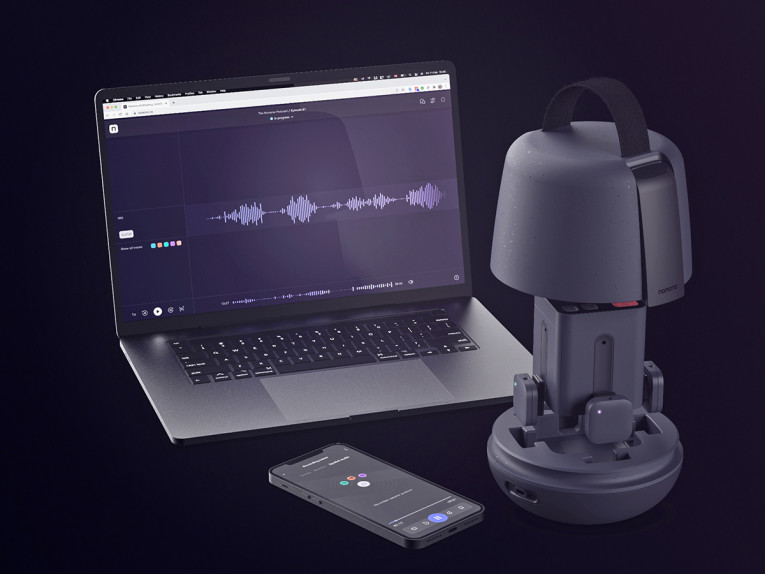
"The podcast format has, in a way, stagnated. In many cases it’s two or three people having a conversation in a studio," says Audun Solvang, Chief Technology Officer and co-founder of Nomono, which makes podcasting solutions. "Spatial audio will allow storytellers to reach the audience on a different level and be a tool for creating more diverse content."
Physiologically, widespread spatial audio will make podcasts more pleasant to listen to, not just more engaging. By separating sounds and voices and placing them spatially around listeners, producers can reduce listening fatigue, says Solvang, improving the podcast format even more.
For Yocum, taking tools he uses in film and, without much adjustment, applying them to spatial audio podcasts, is a boon for creativity. "The potential for this technology goes beyond high-production narrative experiences," he says.
Byers likes that new spatial audio solutions bring not just immersiveness, but also ease of use. So while spatial audio may be the next big thing, the barriers to entry are not unreasonable and podcasting in general will likely benefit. "Accessibility and equity are really important," he says. "If there's an advancement somewhere that makes podcasting easier for someone, that’s only a good thing."
Brad Grimes is a long-time technology journalist and former communications director of the Audiovisual and Integrated Experience Association.
This article was originally published in The Audio Voice newsletter, (#385), July 28, 2022.



